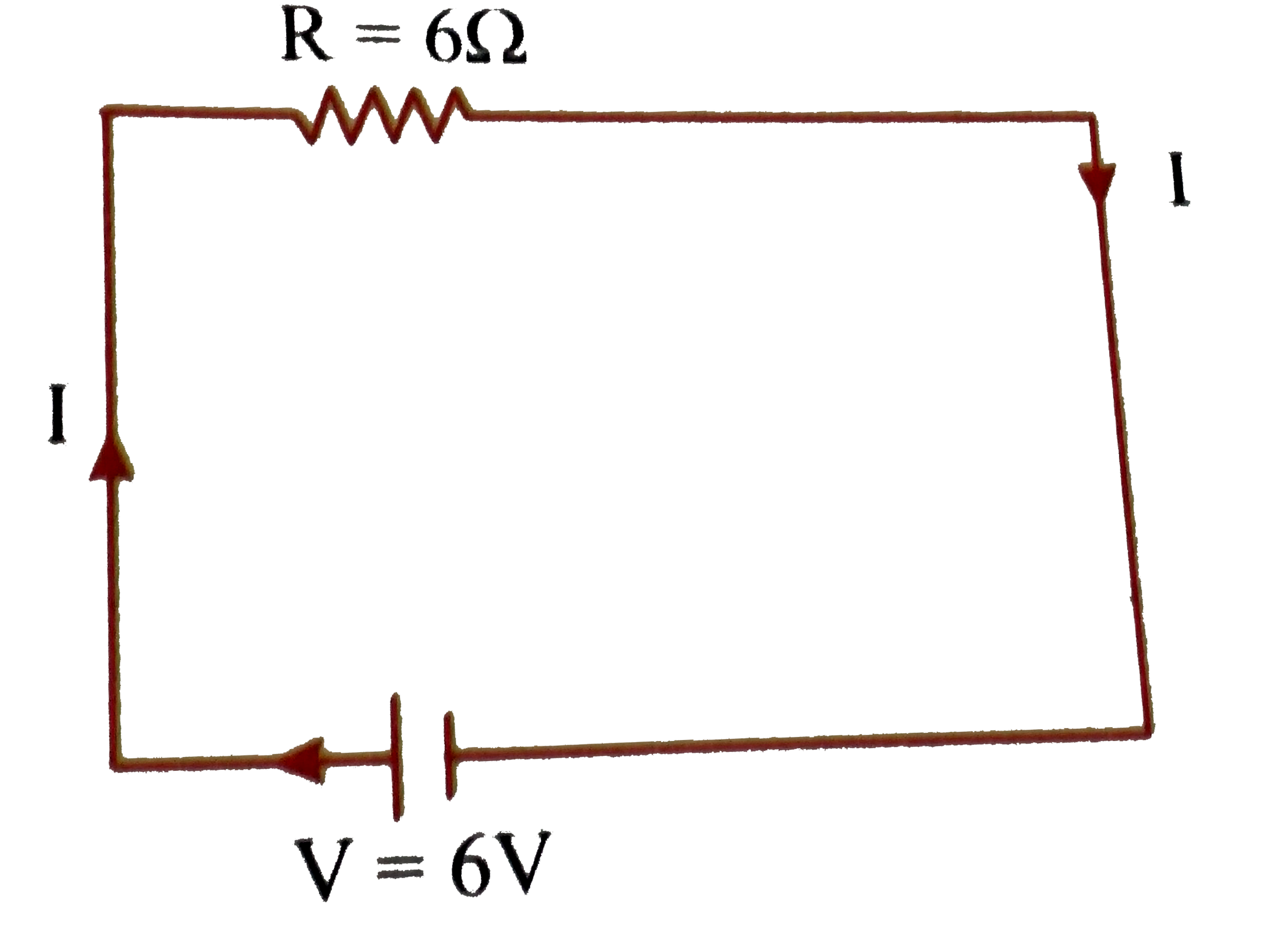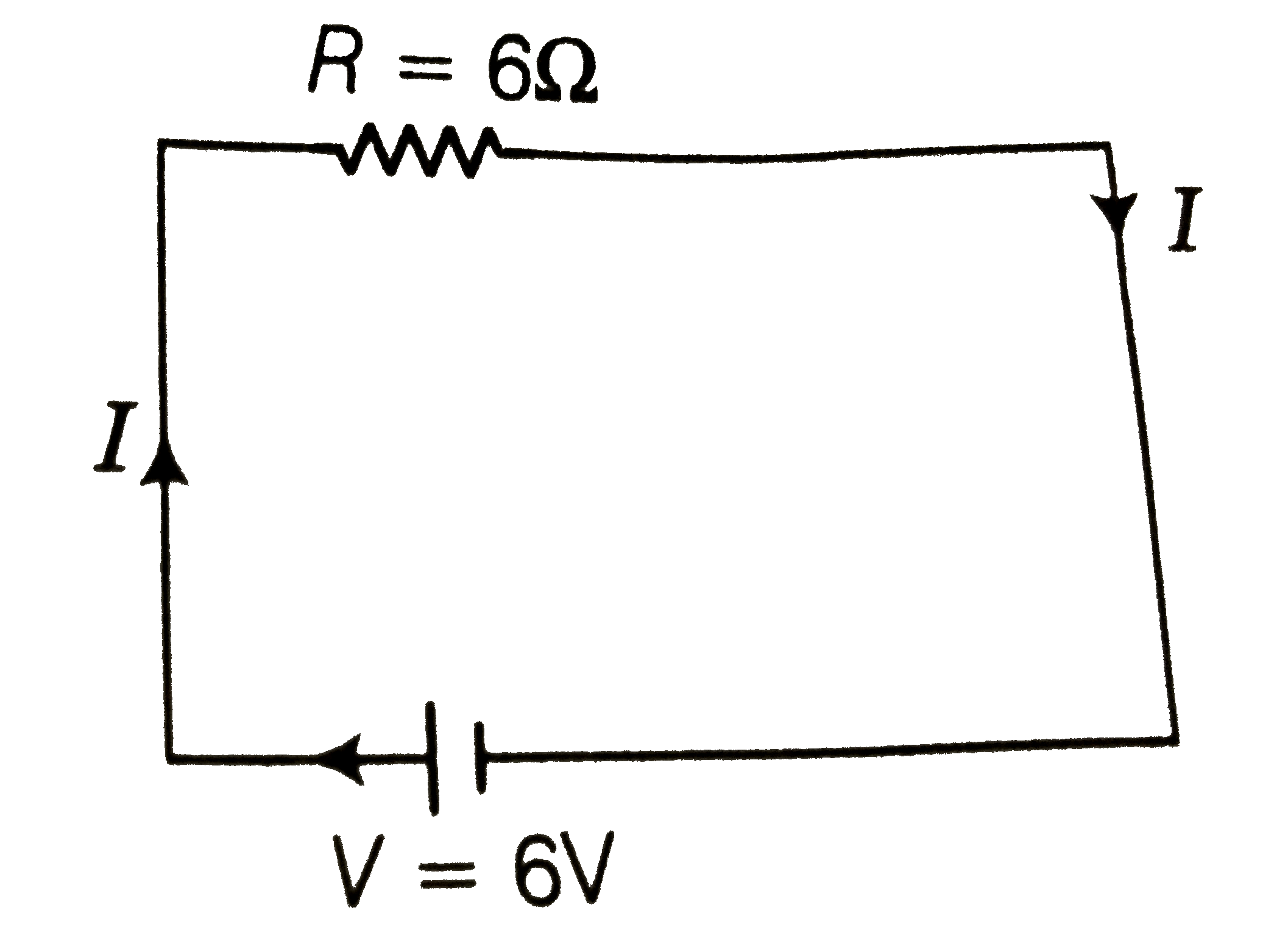
(A) Consider circuit in figure. How much energy is absorbed by electrons from the initial state of no current (Ignore thermal motion) to the state of drift velocity?
(b) electrons give up energy at the rate of RI2 per second tot he thermal energy. What time scale would number associate with energy in problem (a)? n= number of electron/volume=1029m3 length of circuit=10cm, cross-section A=(1mm)2
The correct Answer is:A
Step by step video, text & image solution for (A) Consider circuit in figure. How much energy is absorbed by electrons from the initial state of no current (Ignore thermal motion) to the state of drift velocity? (b) electrons give up energy at the rate of RI^(2) per second tot he thermal energy. What time scale would number associate with energy in problem (a)? n= number of electron/volume=(10^(29))/(m^(3)) length of circuit=10cm, cross-section A=(1mm)^(2) by Physics experts to help you in doubts & scoring excellent marks in Class 12 exams.
Topper's Solved these Questions
- BOOK - CENGAGE PHYSICSCHAPTER - HEATING EFFECT OF CURRENTEXERCISE - Calculating Thermal Power in Resistance14videos
HEATING EFFECT OF CURRENT
- BOOK - CENGAGE PHYSICSCHAPTER - GRAVITATIONEXERCISE - Question Bank39videos
GRAVITATION
- BOOK - CENGAGE PHYSICSCHAPTER - INDUCTANCEEXERCISE - Concept Based9videos
INDUCTANCE
Similar Questions

(a). Consider circuit in figure. How much energy is absorbed by electrons from the initial state of no current (ignore thermal motion) to the state of drift velocity?
(b). Electrons give up energy at the rate of RI2 per second to the thermal energy. what time scale would number associate with energy in problem (a)? n=number f electron/volume=1029/m3. Length of circuit =10cm, cross-section=A=(1mm)2.View Solution
(A) Consider circuit in figure. How much energy is absorbed by electrons from the initial state of no current (Ignore thermal motion) to the state of drift velocity?
(b) electrons give up energy at the rate of RI2 per second tot he thermal energy. What time scale would number associate with energy in problem (a)? n= number of electron/volume=1029m3 length of circuit=10cm, cross-section A=(1mm)2View Solution
Knowledge Check
- Question 1 - Select One
A conductor wire having 1029 free electrons /m3 carries a current of 20A. If the cross-section of the wire is 1mm2, then the drift velocity of electrons will be :
A6.25×10−3ms−1B1.25×10−5ms−1C1.25×10−3ms−1D1.25×10−4ms−1 - Question 2 - Select One
There are 8.4×1022 free electrons per cm3 in copper. The current in the wire is 0.21A (e=1.6×10−19C). Then the drifts velocity of electrns in a copper wire of 1mm2 cross section, will be:-
A2.12×10−5msB0.78×10−5msC1.56×10−5msDNone of these - Question 3 - Select One
What is the energy in eV requried to excite the electron from n=1 to n=2 state in hydrogen atom? (n=principal quantum number)
A13.6B3.4C17D10.2

(A) Consider circuit in figure. How much energy is absorbed by electrons from the initial state of no current (Ignore thermal motion) to the state of drift velocity?
(b) electrons give up energy at the rate of RI2 per second tot he thermal energy. What time scale would number associate with energy in problem (a)? n= number of electron/volume=1029m3 length of circuit=10cm, cross-section A=(1mm)2View SolutionA current of "1.6A" is flowing through "h" wire having cross- sectional area 1mm2 .If density of free electrons in the material of the wire is 1029 per m3 ,the drift velocity of electrons will be:-
View SolutionThe electron in a hydrogen atom initially in state of quantum number n1 makes a transition to a state whose excitation energy with respect to the ground state is 10.2 eV. If the wavelength associated with the photon emitted in this transition is 487.5 nm, find the (i) energy in eV, and (ii) value of the quantum number, n1 of the electron in its initial state.
View SolutionThere is a current of 40 A in a wire 10−6m2 area of cross-section. If the number of free electrons per cubic metre is 1029, then the drift velocity is :
View SolutionWhat is the energy in eV requried to excite the electron from n=1 to n=2 state in hydrogen atom? (n=principal quantum number)
View Solution

